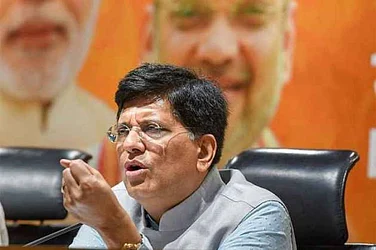Power sector has witnessed significant improvement over the last decade with achievement of 100 per cent electrification, a remarkable stride towards achieving energy transition objectives with the renewable capacity reaching 144GW at FYE24, substantial improvement in network strengthening including grid balance and reduction in T&D losses.
Interim budget also showed continued focus on green energy with viability gap funding (VGF) for offshore wind and incentivizing solar rooftop projects under the Pradhan Mantri Suryoday Yojana. Therefore, power sector is expected to remain in focus for the budget 2025 to ensure a continuous creation of a robust and reliable infrastructure.
India’s peak demand has already surpassed 250GW in May 2024 and the country was able to meet this demand led by the concerted efforts to create generating capacities, grid balance and resource allocation. Increase in industrial activity, changing consumer aspiration leading to higher retail demand, increased mechanization in agri space amidst changing weather patterns are also leading to the demand increasing at over 7 per cent yoy. We envisage demand to further inch up on the back of increasing EV infrastructure, large power requirements from upcoming data centers and pick up of the green hydrogen mission.
Advertisement
To meet this burgeoning demand, the government has already set capacity targets for the renewable, thermal, hydro and nuclear sectors.
While the focus in the last decade was on ramping up renewable capacities, with limited capacity addition in the thermal space, we expect thermal sector to continue to remain the backbone of India’s power generation and to meet the base load demand.
According to the National Electricity Plan by FY32, the required coal and lignite based installed capacity would be 283 GW compared to the present installed capacity of 214 GW, an addition of 80GW to be achieved over the next 8 years. There are significant growth plans in the nuclear power space as well including indigenization of technologies which also bodes well for power supply in long run, though the nuclear space would continue to remain underpinned by the government spending in the sector. Hydro power is also expected to gain momentum with the government focusing on developing resource rich areas.
Advertisement
Having said that, energy transition remains a key theme across the globe, which would require continued capacity addition in cleaner fuels. Technology improvements in the renewable sector are expected to go a long way to ensure their generation profile improves.
New technologies are already offering higher PLFs by around 7-8 per cent. Renewable capacity addition at 18GW in FY24, recorded the highest annual capacity addition. However, to reach the target of 500GW of renewable capacity by 2030, we need to triple the annual capacity addition. To add to that, ensuring grid balance and round the clock power availability through renewables continue to remain key impediments for the growth to be achieved. Therefore, the focus could remain on creating an ecosystem for development of storage techniques at reasonable and competitive costs. Investment incentives for pumped hydro and battery storage could also emerge.
Indigenization of manufacturing ecosystem has remained a key theme over the last few years, enabling building of over 65GW solar module manufacturing capacities by the end of CY2023, as per industry reports. The introduction of basic custom duty on imports of cell and modules, sales through approved list of model and manufacturers and inclusion under the production-linked incentive scheme (PLI) scheme have all paved the way for investment in the sector.
However, a notable difference remains in the backward integration with only around 7GW operational cell manufacturing capacities at end of CY2023. Backward integration to cell and wafer manufacturing, therefore, would now become a core focus area. In this regard, policies supporting investments in this space would be much welcomed by the sector like changes to the GST structure, extension of concessional tax for new manufacturing units commencing operations beyond March 2024, continued PLI schemes.
Advertisement
We also expect the green hydrogen mission to pick up pace. Significant renewable capacity would be required for large scale green hydrogen implementation.
And as mentioned above, the domestic manufacturing capacity may not be sufficient to meet this incremental demand. The government could also look at reducing import duties if used for the green hydrogen production process to ensure both availability and price competitiveness. Around INR180 billion has already been earmarked upto FY30 for electrolyser capacity and green hydrogen capacity installations.
On the transmission and distribution side, losses have been declining which is a positive sign. Revamped Distribution Sector Scheme (RDSS) is already increasing the adoption of smart meters and distribution network upgradation which is likely to continue and would help in decreasing AT&C losses.
Advertisement
Building the required evacuation infrastructure and ISTS connectivity is also a key for the large non fossil fuel capacity development for which integration plans have already been put in place. Interim budget had already increased the allocation to solar grid program to INR85 billion, from INR47 billion last year. In addition, the network needs to be able to cater to the peak requirements and frequency fluctuations which could require capital investment schemes for the discoms supported by the government.
Lastly, continued policy certainty and availability of funding including green financing, VGF support where required for these large investments would also go a long way in creating the desired infrastructure.
Advertisement
(Author is Associate Director & Head – Energy Vertical, India Ratings & Research. Views expressed here are personal)















 Just one email a week
Just one email a week